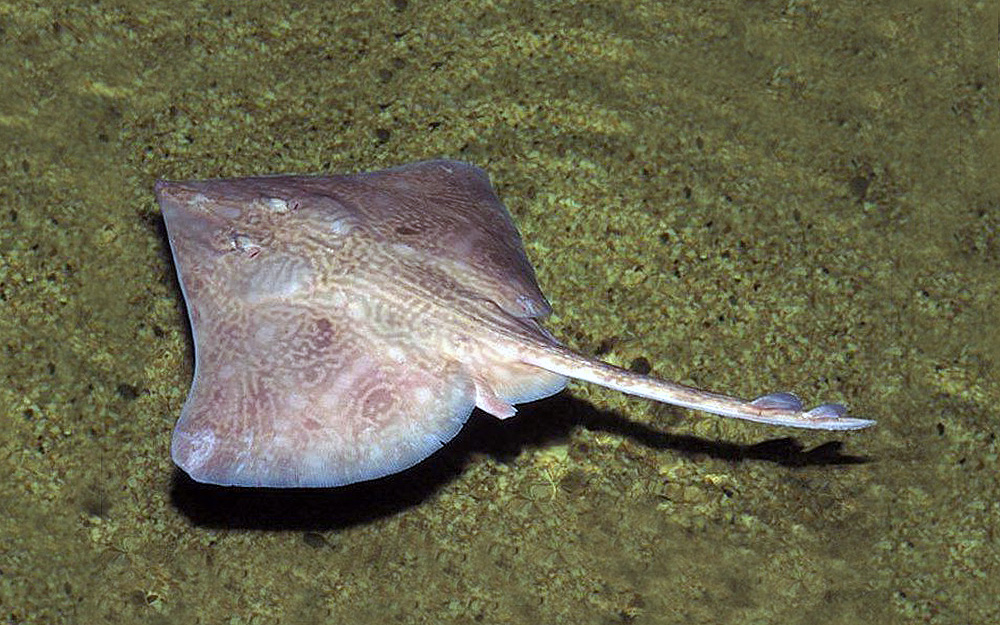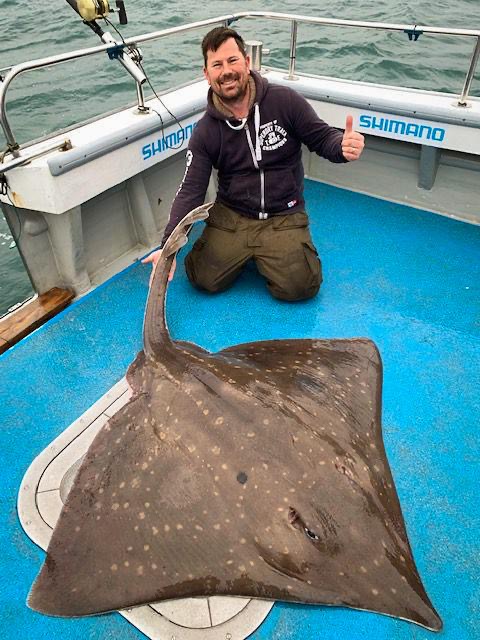Common skate
(Dipturus batis)

Classification
General data
The common skate (Dipturus batis), also known as the blue skate, is the largest skate in the world, attaining a length of up to 2.85 m (9 ft 4 in). Historically, it was one of the most abundant skates in the northeast Atlantic Ocean and the Mediterranean Sea. Despite its name, today it appears to be absent from much of this range. Where previously abundant, fisheries directly targeted this skate and elsewhere it is caught incidentally as bycatch. The species was uplisted to critically endangered on the IUCN Red List in 2006 and it is protected within the EU.
Research published in 2009 and 2010 showed that the species should be split into two, the smaller southern D. cf. flossada (blue skate), and the larger northern D. cf. intermedius (flapper skate). Under this taxonomic arrangement, the name D. batis is discarded. Alternatively, the scientific name D. batis (with flossada as a synonym) is retained for the blue skate and D. intermedius for the flapper skate.
Description
The common skate can reach up to 2.85 m (9 ft 4 in) in length, 2 m (6 ft 7 in) in width, and 113 kg (249 lb) in weight, making it the largest skate in the world. Overall shape features a pointed snout and rhombic shape, with a row of spines or thorns along the tail. The top surface is generally colored olive-grey to brown, often with a pattern of spots, and the underside is lighter blue-grey.[2] It can be confused with several other skates in its range, such as D. nidarosiensis, D. oxyrinchus, and Rostroraja alba.
Range, habitat, and ecology
The common skate is native to the northeast Atlantic and Mediterranean Sea. Historically, the species ranged from Iceland and northern Norway to Madeira and northern Morocco.It is a bottom dwelling species mainly found at depths of 100–200 m (330–660 ft), but it can occur as shallow as 30 m (100 ft) and as deep as 1,000 m (3,300 ft). They are found in those depths at the waters off northwestern Scotland and in the Celtic Sea, and along the edge of the continental shelf. At the start of the twentieth century common skates had a wide range around the British Isles. Now, their population and range are severely depleted and fragmented, with disappearances being reported on several places.












